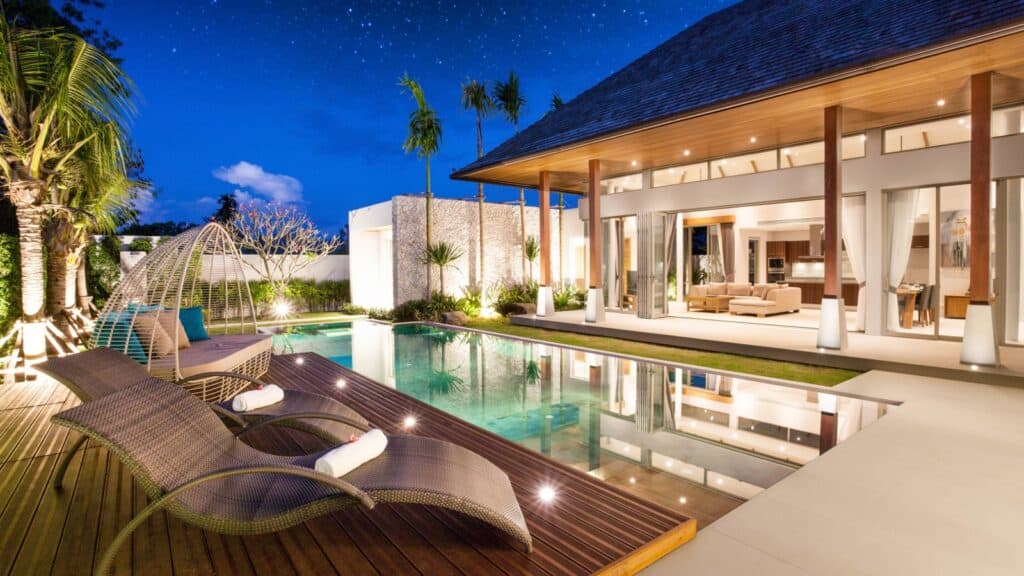8 Steps to Choosing the Right Color to Paint Your House
Choosing the right color to paint your house can feel like a daunting task. The exterior color of your home not only makes a first impression but can also reflect your personal style and increase your home’s curb appeal. The choice is significant, but with the right considerations and approach, you can select a color that complements your home’s architecture, fits your neighborhood, and matches your personal aesthetic. This article will guide you through everything you need to know about selecting the perfect house color.
1. Understand Your Home’s Style

Before diving into paint colors, it’s essential to consider your home’s architectural style. Different home styles traditionally look best with certain colors, and working within those color schemes can elevate your home’s appearance.
- Colonial Homes: Typically, colonial homes are painted in white, gray, or other muted tones. These colors complement the symmetrical and structured nature of this architectural style.
- Victorian Homes: Victorian homes offer more flexibility, and bold colors like deep reds, greens, and blues often work well with the intricate details of this style.
- Modern Homes: For modern homes, neutral colors such as white, black, and gray can provide a sleek, minimalist look.
- Cottage or Craftsman Homes: These homes often work well with natural earth tones, like soft greens, warm browns, and beige.
By respecting the architectural heritage of your home, you can narrow down your options and create a harmonious exterior.
2. Consider the Surrounding Environment

The environment around your home plays a huge role in determining the right color. Take into account:
- Neighborhood Trends: While you want your home to stand out, it’s important to maintain a sense of cohesion with the other houses in your neighborhood. A house painted in neon colors in a neighborhood full of muted tones may feel out of place. On the other hand, a neighborhood with vibrant homes can inspire you to be more adventurous with your choice.
- Landscape: The landscape surrounding your home can influence the colors that work best. If your house is surrounded by trees or greenery, earth tones such as olive, tan, or brown can blend beautifully. Conversely, if your house is in an urban environment or desert area, cooler tones like gray, blue, or white may offer a more complementary aesthetic.
- Climate: Some colors may be more appropriate depending on the climate where you live. For example, in warm or sunny climates, lighter colors like white, beige, or pastel tones can reflect heat and keep the house cooler. In cooler climates, darker shades like navy, charcoal, or forest green may add warmth and coziness to your home’s exterior.
3. Explore Color Families

Paint colors are often grouped into families, such as neutrals, pastels, and bold hues. Understanding these color families and how they interact with other elements of your home is crucial.
- Neutrals: Neutrals are a safe choice and work with almost any architectural style. These colors include whites, grays, beiges, and tans. Neutrals are versatile, timeless, and allow for more experimentation with trim or accent colors.
- Pastels: Soft pastels like pale blue, soft yellow, or light green can provide a calming and welcoming atmosphere. They work well on beach houses, cottages, or homes in bright, sunny areas.
- Bold Colors: Bold colors like deep blue, burgundy, or dark green can create a dramatic effect, especially if used as an accent or paired with neutral trim. These colors are typically reserved for more adventurous designs or homes in neighborhoods where bright colors are common.
By identifying which color family resonates with your style and the vibe you want to convey, you’ll be closer to selecting the right color.
4. Test Out Samples

Once you’ve narrowed down your color choices, it’s important to test them out before committing. Paint samples are a great way to see how the color looks on your house and in different lighting throughout the day. Here’s how to properly test your paint samples:
- Test on Different Sides of the House: Since sunlight affects how color appears, test your samples on different sides of your home. A color might look different on a sunny wall compared to one in the shade.
- View at Different Times of Day: Check the color in the morning, afternoon, and evening to see how it appears in different lighting conditions.
- Consider Sheen: Exterior paints come in different finishes, including flat, satin, and gloss. Flat paints provide a more subdued look, while glossier finishes can highlight architectural details.
By taking the time to observe your samples, you can avoid the regret of choosing a color that looked great in the store but not on your home.
5. Complementary Trim Colors

Once you have your primary color picked, it’s time to think about complementary trim and accent colors. The trim color can highlight architectural features and make your home stand out. Common approaches to trim include:
- Contrasting Colors: Using a lighter trim color on a dark house or vice versa can create a striking contrast and give your home a bold, modern look.
- Matching Tones: Some homeowners prefer to keep the trim color in the same color family as the primary color for a more subtle, monochromatic look. For example, if your home is a soft gray, a white or light gray trim may work well.
- Accent Colors: Don’t forget about doors, shutters, or other details that can pop with a bright accent color. For instance, a red front door can add a touch of warmth and personality to a neutral-colored house.
6. Consider Long-Term Appeal

While it’s tempting to follow trends, it’s important to choose a color that you’ll love for years to come. Bold or trendy colors can look exciting in the moment but may feel outdated in a few years. If you’re planning to stay in your home for a long time, classic, timeless colors may be a better option.
If you’re planning to sell in the near future, opt for colors with broad appeal. Neutral tones tend to attract more buyers and can increase your home’s resale value. Homes with fresh, neutral-colored exteriors generally perform better in the real estate market.
7. Factor in Materials

Your home’s building materials—whether it’s brick, stucco, wood, or vinyl—can also influence your color choice.
- Brick Homes: For brick homes, consider colors that complement the natural brick tone. Soft grays, greens, or creamy whites often pair well with red or brown brick.
- Wood Siding: Wood can be stained or painted. If you prefer to let the natural wood grain show, a stain in a wood tone like cedar or mahogany might be your best bet. Painted wood homes look good in a wide range of colors, from light neutrals to bold blues and greens.
- Stucco: Stucco homes, common in the southwestern U.S., look great in earth tones like terracotta, beige, or peach.
8. Consult a Professional

If you’re feeling overwhelmed by the choices or want to ensure your home’s exterior looks its best, consider consulting with a professional color consultant or designer. They can provide guidance on color combinations, test samples, and even give digital renderings to help you visualize your final decision.
Conclusion

Choosing a color to paint your house is both an exciting and important decision. By considering your home’s style, the surrounding environment, and your personal preferences, you can select a color that not only enhances your home’s beauty but also increases its value. Whether you go bold, classic, or neutral, take your time and test out samples before making a final decision. A well-chosen paint color can transform your home and create a space you’ll love for years to come.
Choosing The Right Light Bulb: A Buyers Guide

In the past, purchasing a light bulb was a straightforward task. You’d walk into a store, look for a 60-watt incandescent bulb, and be on your way. However, with the rapid advancements in lighting technology and the subsequent phasing out of traditional incandescent bulbs, buying light bulbs has become a more complex, yet rewarding, endeavor. In this article, we’ll explore the evolution of light bulbs, why old-style incandescent bulbs were outlawed, and how modern alternatives not only meet but exceed the expectations set by their predecessors.
READ: Choosing The Right Light Bulb: A Buyers Guide
Plastic vs. Wood Cutting Boards: Which Is The Better Choice?

When it comes to food preparation, choosing the right cutting board is as crucial as selecting the right knife. Whether you’re slicing vegetables or carving meat, the cutting board you use can significantly impact your kitchen experience. The debate between plastic and wood cutting boards has been ongoing, with both materials offering unique advantages. But which one truly stands out? In this guide, we’ll dissect the differences between plastic and wood cutting boards, so you can make the best choice for your kitchen, ensuring safety, durability, and ease of use.
READ: Plastic vs. Wood Cutting Boards: Which Is The Better Choice?
Join Us

Join us on this empowering journey as we explore, celebrate, and elevate “her story.” The Queen Zone is not just a platform; it’s a community where women from all walks of life can come together, share their experiences, and inspire one another. Welcome to a space where the female experience takes center stage. Sign up for our newsletter so you don’t miss a thing, Queen!







